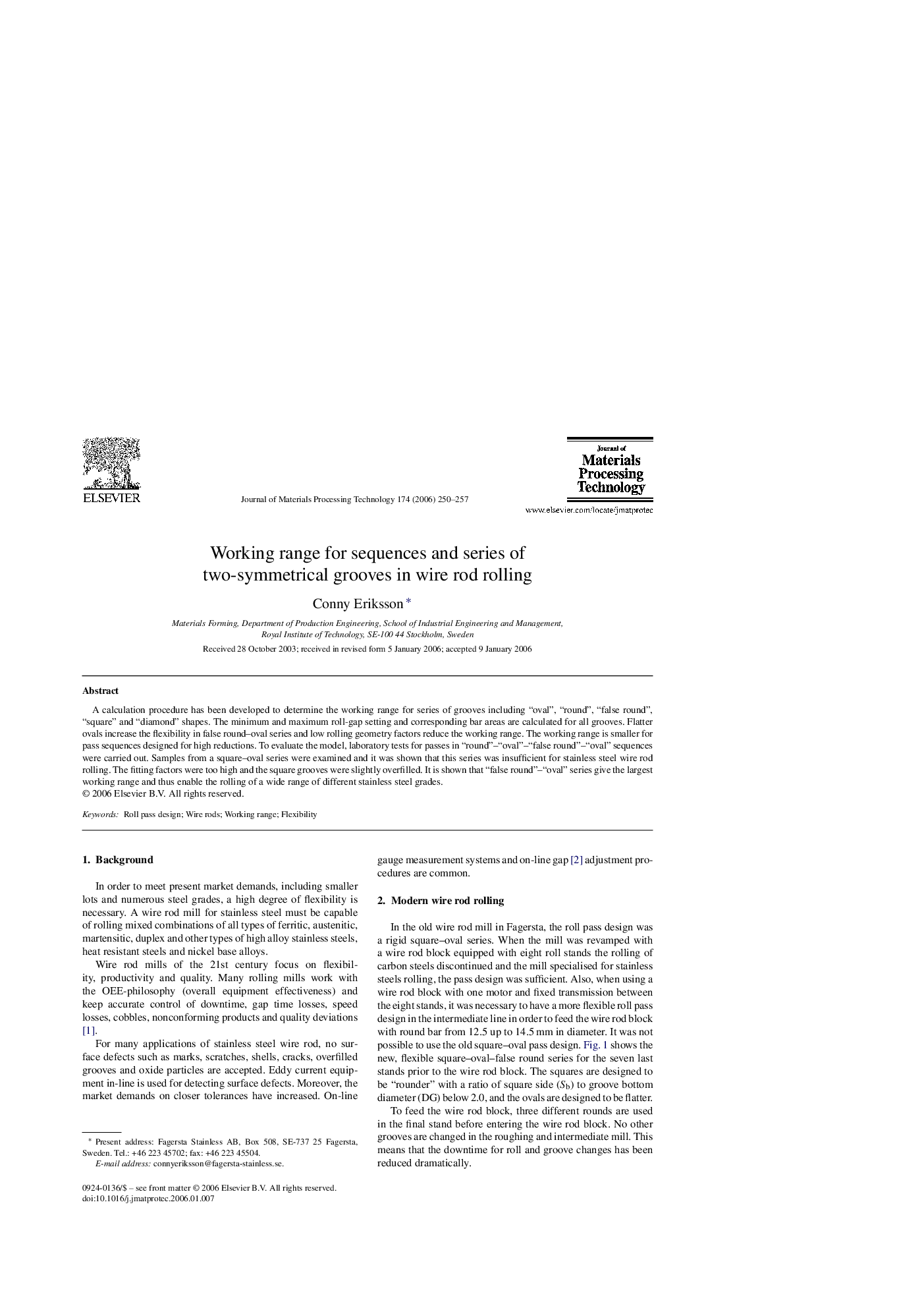| Article ID | Journal | Published Year | Pages | File Type |
|---|---|---|---|---|
| 796592 | Journal of Materials Processing Technology | 2006 | 8 Pages |
A calculation procedure has been developed to determine the working range for series of grooves including “oval”, “round”, “false round”, “square” and “diamond” shapes. The minimum and maximum roll-gap setting and corresponding bar areas are calculated for all grooves. Flatter ovals increase the flexibility in false round–oval series and low rolling geometry factors reduce the working range. The working range is smaller for pass sequences designed for high reductions. To evaluate the model, laboratory tests for passes in “round”–“oval”–“false round”–“oval” sequences were carried out. Samples from a square–oval series were examined and it was shown that this series was insufficient for stainless steel wire rod rolling. The fitting factors were too high and the square grooves were slightly overfilled. It is shown that “false round”–“oval” series give the largest working range and thus enable the rolling of a wide range of different stainless steel grades.
